Auditing Theory and Practice: ASA 701 and ABC Learning Downfall Report
VerifiedAdded on 2020/03/23
|13
|3494
|84
Report
AI Summary
This report provides an in-depth analysis of auditing theory and practice, focusing on the application of ASA 701, which concerns communicating key audit matters in the independent auditor's report. The report uses the downfall of the ABC Learning Centre as a case study to illustrate the impact of auditing standards and the responsibilities of auditors. It examines the reasons behind the company's collapse, including inefficient business models, accounting issues, and ineffective auditing practices. The report details the features of ASA 701, its effect on the ABC Learning crisis, and the lessons learned from the case. It highlights the importance of auditors in identifying key audit matters and providing transparent and accurate financial reports to protect investors and ensure the integrity of financial markets. Recommendations are also provided for improving auditing practices and preventing similar crises in the future.
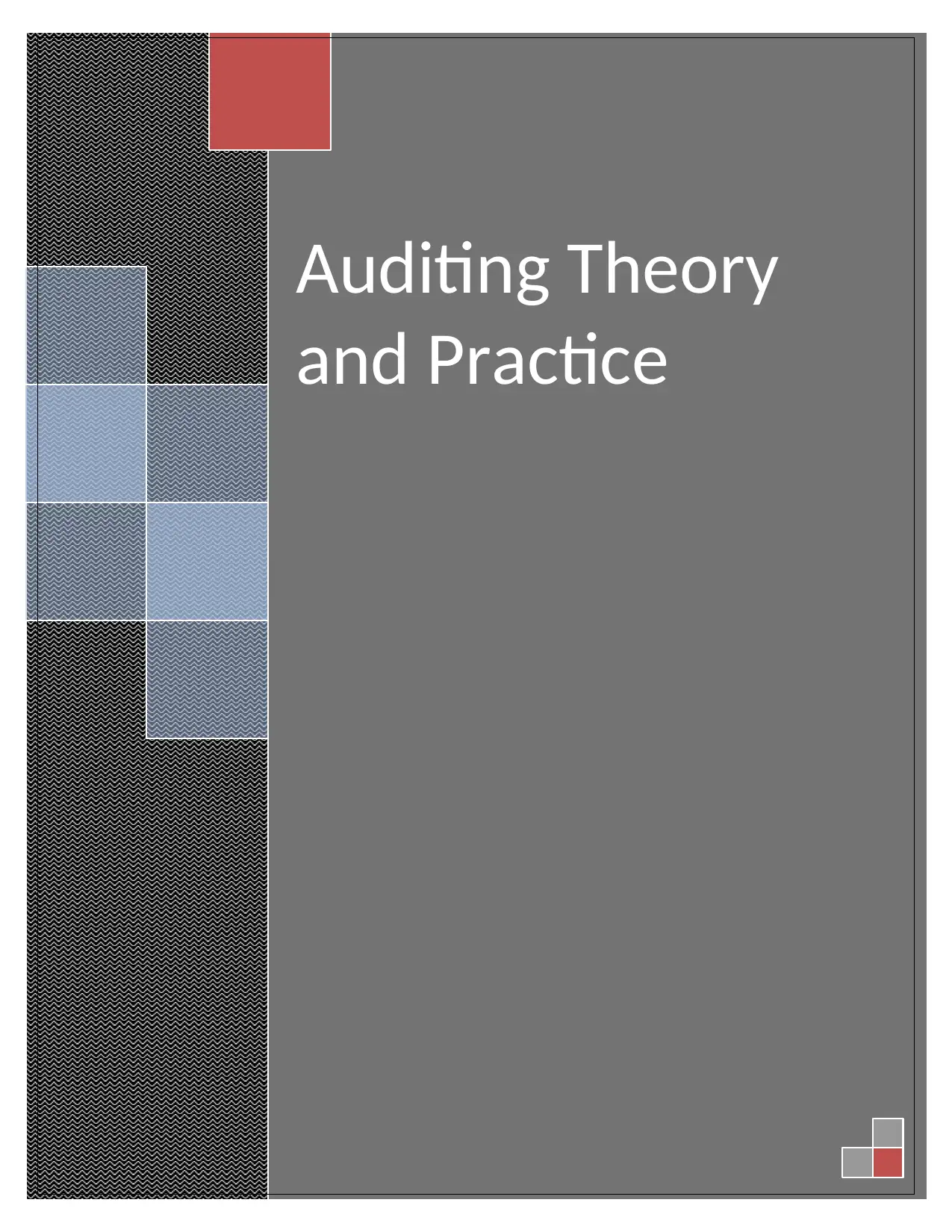
Auditing Theory
and Practice
and Practice
Paraphrase This Document
Need a fresh take? Get an instant paraphrase of this document with our AI Paraphraser
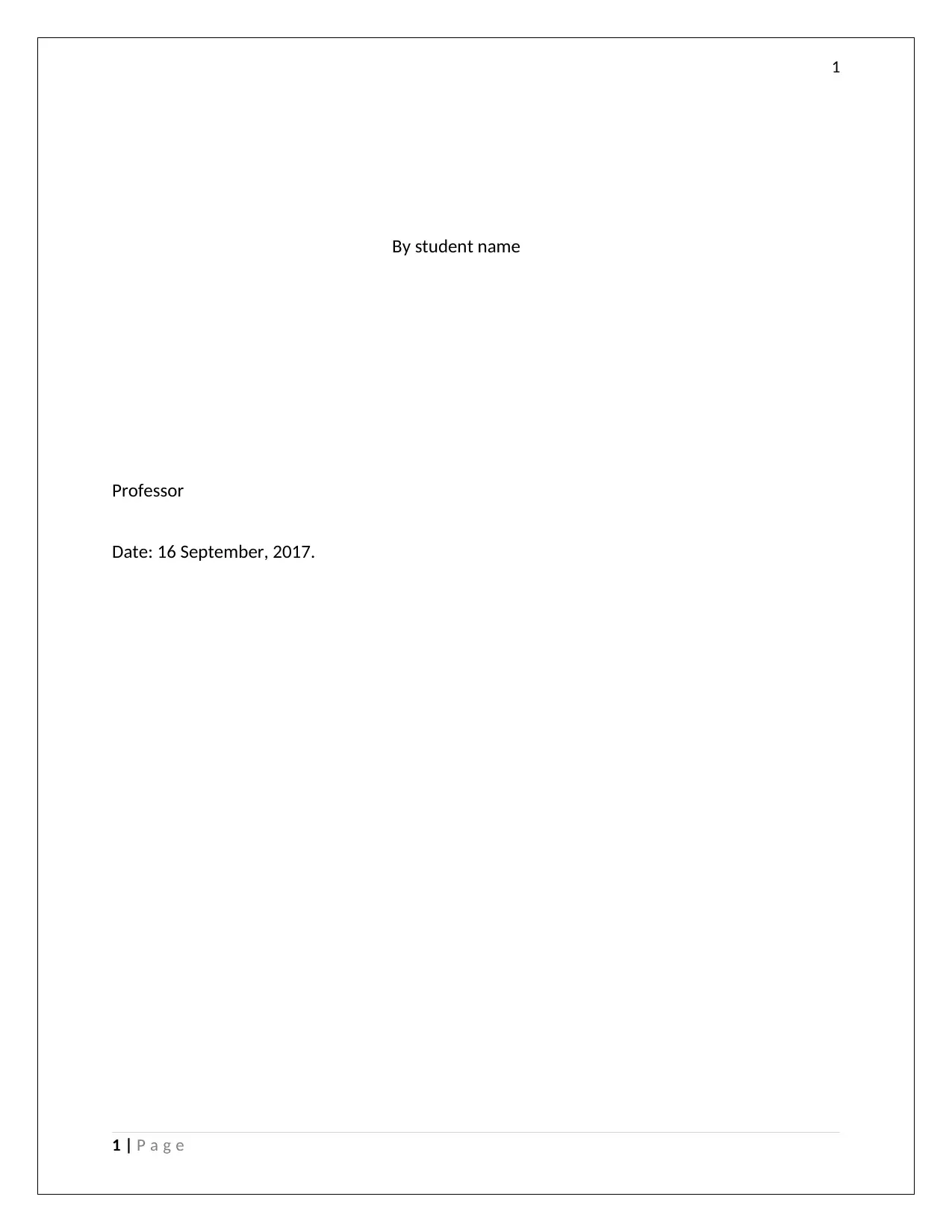
1
By student name
Professor
Date: 16 September, 2017.
1 | P a g e
By student name
Professor
Date: 16 September, 2017.
1 | P a g e
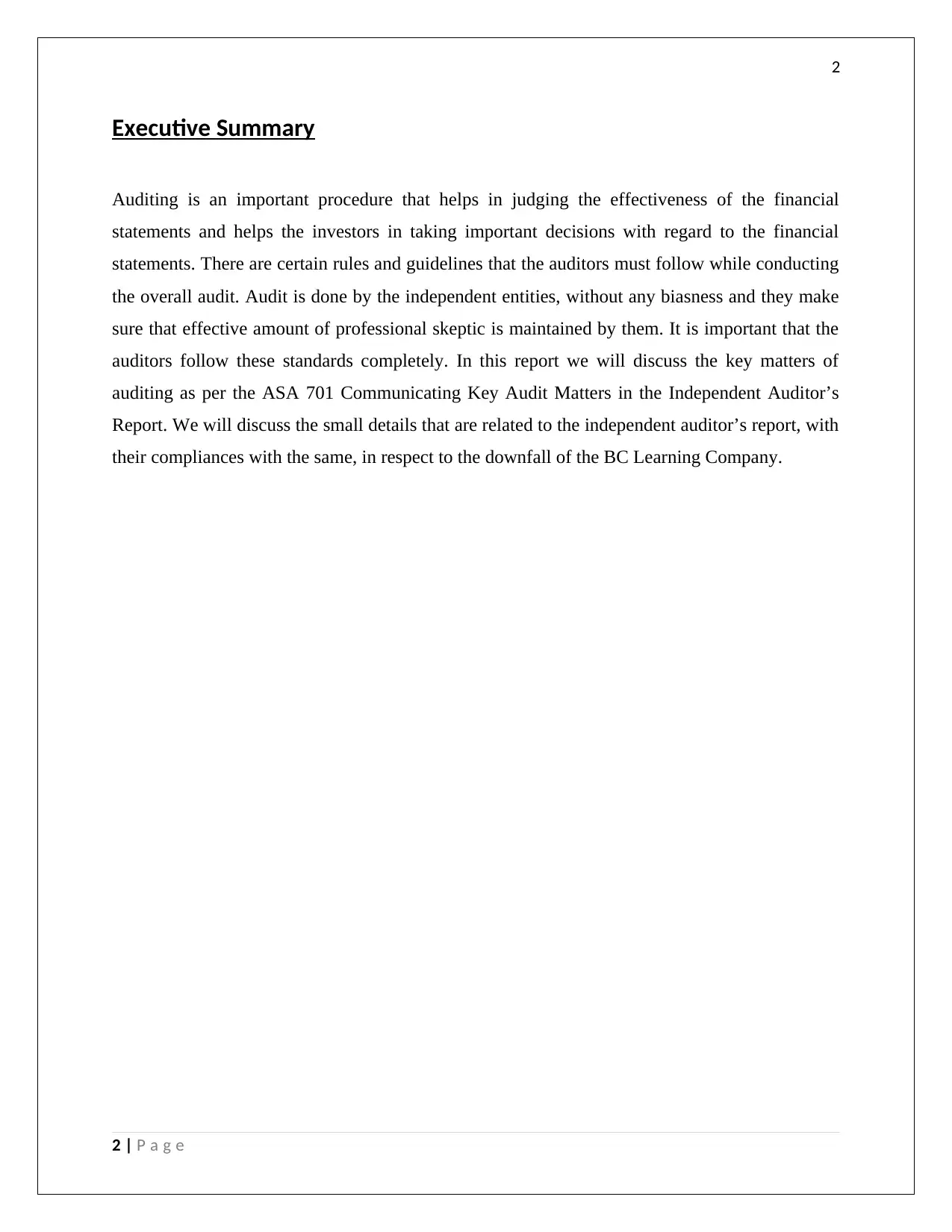
2
Executive Summary
Auditing is an important procedure that helps in judging the effectiveness of the financial
statements and helps the investors in taking important decisions with regard to the financial
statements. There are certain rules and guidelines that the auditors must follow while conducting
the overall audit. Audit is done by the independent entities, without any biasness and they make
sure that effective amount of professional skeptic is maintained by them. It is important that the
auditors follow these standards completely. In this report we will discuss the key matters of
auditing as per the ASA 701 Communicating Key Audit Matters in the Independent Auditor’s
Report. We will discuss the small details that are related to the independent auditor’s report, with
their compliances with the same, in respect to the downfall of the BC Learning Company.
2 | P a g e
Executive Summary
Auditing is an important procedure that helps in judging the effectiveness of the financial
statements and helps the investors in taking important decisions with regard to the financial
statements. There are certain rules and guidelines that the auditors must follow while conducting
the overall audit. Audit is done by the independent entities, without any biasness and they make
sure that effective amount of professional skeptic is maintained by them. It is important that the
auditors follow these standards completely. In this report we will discuss the key matters of
auditing as per the ASA 701 Communicating Key Audit Matters in the Independent Auditor’s
Report. We will discuss the small details that are related to the independent auditor’s report, with
their compliances with the same, in respect to the downfall of the BC Learning Company.
2 | P a g e
⊘ This is a preview!⊘
Do you want full access?
Subscribe today to unlock all pages.

Trusted by 1+ million students worldwide
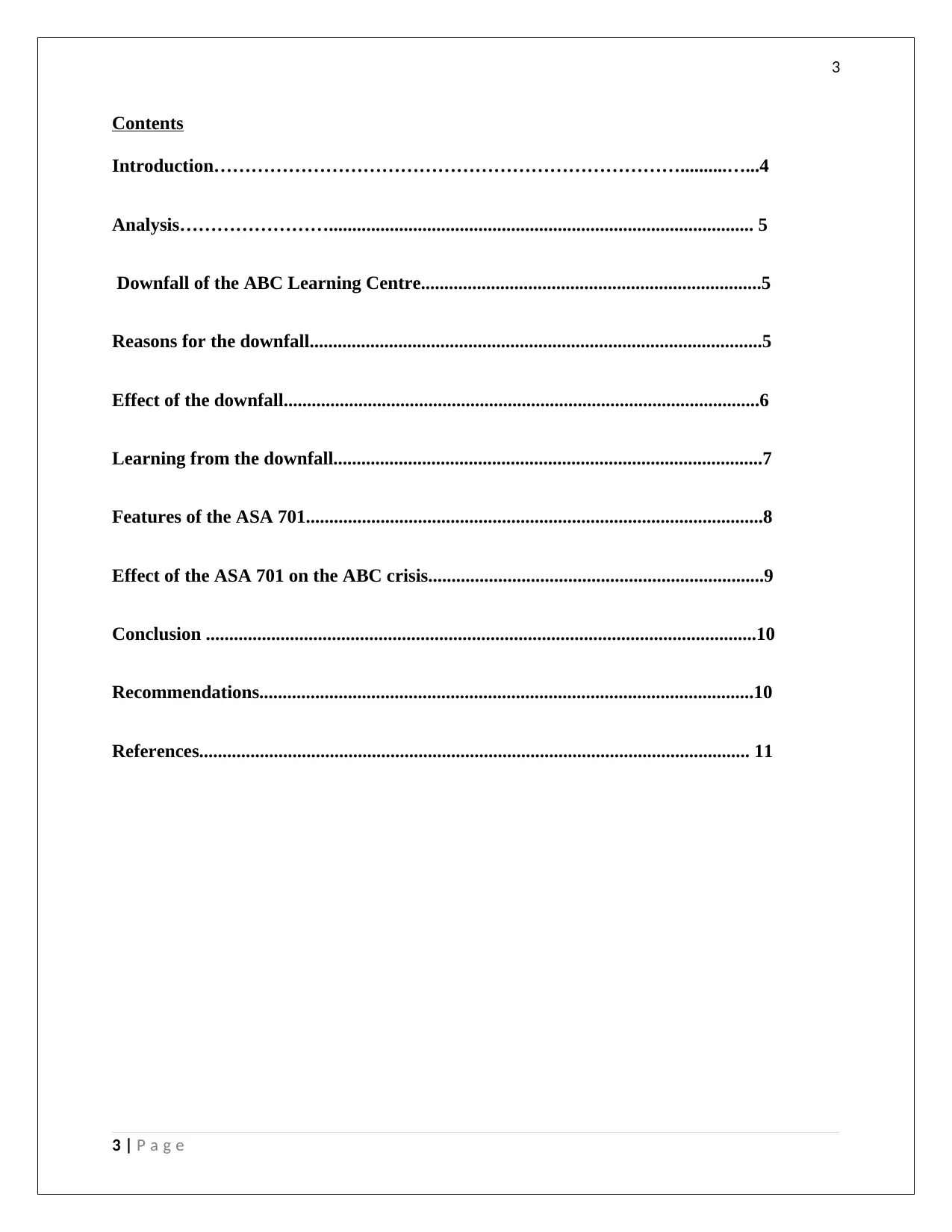
3
Contents
Introduction…………………………………………………………………..........…...4
Analysis……………………........................................................................................... 5
Downfall of the ABC Learning Centre.........................................................................5
Reasons for the downfall.................................................................................................5
Effect of the downfall......................................................................................................6
Learning from the downfall............................................................................................7
Features of the ASA 701..................................................................................................8
Effect of the ASA 701 on the ABC crisis........................................................................9
Conclusion ......................................................................................................................10
Recommendations..........................................................................................................10
References...................................................................................................................... 11
3 | P a g e
Contents
Introduction…………………………………………………………………..........…...4
Analysis……………………........................................................................................... 5
Downfall of the ABC Learning Centre.........................................................................5
Reasons for the downfall.................................................................................................5
Effect of the downfall......................................................................................................6
Learning from the downfall............................................................................................7
Features of the ASA 701..................................................................................................8
Effect of the ASA 701 on the ABC crisis........................................................................9
Conclusion ......................................................................................................................10
Recommendations..........................................................................................................10
References...................................................................................................................... 11
3 | P a g e
Paraphrase This Document
Need a fresh take? Get an instant paraphrase of this document with our AI Paraphraser
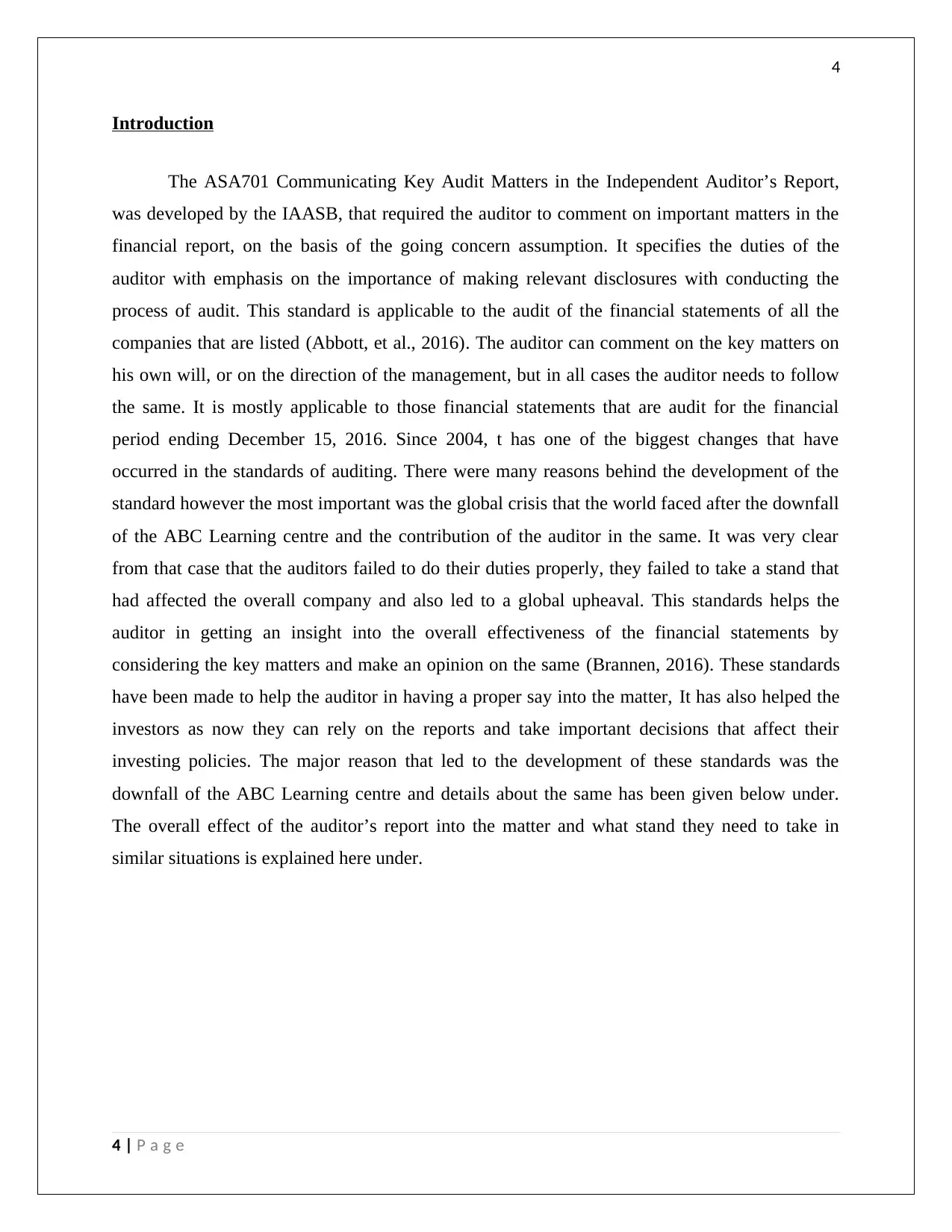
4
Introduction
The ASA701 Communicating Key Audit Matters in the Independent Auditor’s Report,
was developed by the IAASB, that required the auditor to comment on important matters in the
financial report, on the basis of the going concern assumption. It specifies the duties of the
auditor with emphasis on the importance of making relevant disclosures with conducting the
process of audit. This standard is applicable to the audit of the financial statements of all the
companies that are listed (Abbott, et al., 2016). The auditor can comment on the key matters on
his own will, or on the direction of the management, but in all cases the auditor needs to follow
the same. It is mostly applicable to those financial statements that are audit for the financial
period ending December 15, 2016. Since 2004, t has one of the biggest changes that have
occurred in the standards of auditing. There were many reasons behind the development of the
standard however the most important was the global crisis that the world faced after the downfall
of the ABC Learning centre and the contribution of the auditor in the same. It was very clear
from that case that the auditors failed to do their duties properly, they failed to take a stand that
had affected the overall company and also led to a global upheaval. This standards helps the
auditor in getting an insight into the overall effectiveness of the financial statements by
considering the key matters and make an opinion on the same (Brannen, 2016). These standards
have been made to help the auditor in having a proper say into the matter, It has also helped the
investors as now they can rely on the reports and take important decisions that affect their
investing policies. The major reason that led to the development of these standards was the
downfall of the ABC Learning centre and details about the same has been given below under.
The overall effect of the auditor’s report into the matter and what stand they need to take in
similar situations is explained here under.
4 | P a g e
Introduction
The ASA701 Communicating Key Audit Matters in the Independent Auditor’s Report,
was developed by the IAASB, that required the auditor to comment on important matters in the
financial report, on the basis of the going concern assumption. It specifies the duties of the
auditor with emphasis on the importance of making relevant disclosures with conducting the
process of audit. This standard is applicable to the audit of the financial statements of all the
companies that are listed (Abbott, et al., 2016). The auditor can comment on the key matters on
his own will, or on the direction of the management, but in all cases the auditor needs to follow
the same. It is mostly applicable to those financial statements that are audit for the financial
period ending December 15, 2016. Since 2004, t has one of the biggest changes that have
occurred in the standards of auditing. There were many reasons behind the development of the
standard however the most important was the global crisis that the world faced after the downfall
of the ABC Learning centre and the contribution of the auditor in the same. It was very clear
from that case that the auditors failed to do their duties properly, they failed to take a stand that
had affected the overall company and also led to a global upheaval. This standards helps the
auditor in getting an insight into the overall effectiveness of the financial statements by
considering the key matters and make an opinion on the same (Brannen, 2016). These standards
have been made to help the auditor in having a proper say into the matter, It has also helped the
investors as now they can rely on the reports and take important decisions that affect their
investing policies. The major reason that led to the development of these standards was the
downfall of the ABC Learning centre and details about the same has been given below under.
The overall effect of the auditor’s report into the matter and what stand they need to take in
similar situations is explained here under.
4 | P a g e
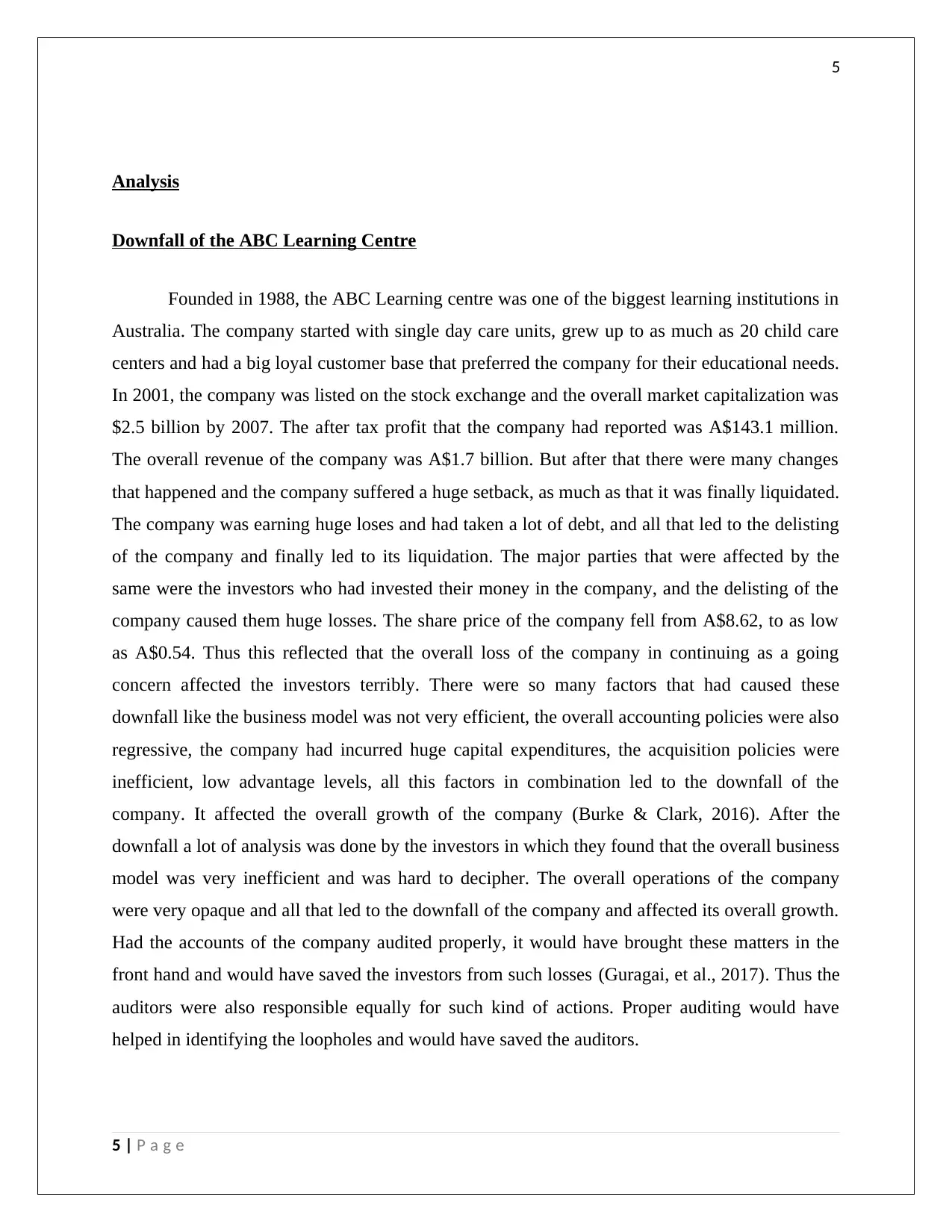
5
Analysis
Downfall of the ABC Learning Centre
Founded in 1988, the ABC Learning centre was one of the biggest learning institutions in
Australia. The company started with single day care units, grew up to as much as 20 child care
centers and had a big loyal customer base that preferred the company for their educational needs.
In 2001, the company was listed on the stock exchange and the overall market capitalization was
$2.5 billion by 2007. The after tax profit that the company had reported was A$143.1 million.
The overall revenue of the company was A$1.7 billion. But after that there were many changes
that happened and the company suffered a huge setback, as much as that it was finally liquidated.
The company was earning huge loses and had taken a lot of debt, and all that led to the delisting
of the company and finally led to its liquidation. The major parties that were affected by the
same were the investors who had invested their money in the company, and the delisting of the
company caused them huge losses. The share price of the company fell from A$8.62, to as low
as A$0.54. Thus this reflected that the overall loss of the company in continuing as a going
concern affected the investors terribly. There were so many factors that had caused these
downfall like the business model was not very efficient, the overall accounting policies were also
regressive, the company had incurred huge capital expenditures, the acquisition policies were
inefficient, low advantage levels, all this factors in combination led to the downfall of the
company. It affected the overall growth of the company (Burke & Clark, 2016). After the
downfall a lot of analysis was done by the investors in which they found that the overall business
model was very inefficient and was hard to decipher. The overall operations of the company
were very opaque and all that led to the downfall of the company and affected its overall growth.
Had the accounts of the company audited properly, it would have brought these matters in the
front hand and would have saved the investors from such losses (Guragai, et al., 2017). Thus the
auditors were also responsible equally for such kind of actions. Proper auditing would have
helped in identifying the loopholes and would have saved the auditors.
5 | P a g e
Analysis
Downfall of the ABC Learning Centre
Founded in 1988, the ABC Learning centre was one of the biggest learning institutions in
Australia. The company started with single day care units, grew up to as much as 20 child care
centers and had a big loyal customer base that preferred the company for their educational needs.
In 2001, the company was listed on the stock exchange and the overall market capitalization was
$2.5 billion by 2007. The after tax profit that the company had reported was A$143.1 million.
The overall revenue of the company was A$1.7 billion. But after that there were many changes
that happened and the company suffered a huge setback, as much as that it was finally liquidated.
The company was earning huge loses and had taken a lot of debt, and all that led to the delisting
of the company and finally led to its liquidation. The major parties that were affected by the
same were the investors who had invested their money in the company, and the delisting of the
company caused them huge losses. The share price of the company fell from A$8.62, to as low
as A$0.54. Thus this reflected that the overall loss of the company in continuing as a going
concern affected the investors terribly. There were so many factors that had caused these
downfall like the business model was not very efficient, the overall accounting policies were also
regressive, the company had incurred huge capital expenditures, the acquisition policies were
inefficient, low advantage levels, all this factors in combination led to the downfall of the
company. It affected the overall growth of the company (Burke & Clark, 2016). After the
downfall a lot of analysis was done by the investors in which they found that the overall business
model was very inefficient and was hard to decipher. The overall operations of the company
were very opaque and all that led to the downfall of the company and affected its overall growth.
Had the accounts of the company audited properly, it would have brought these matters in the
front hand and would have saved the investors from such losses (Guragai, et al., 2017). Thus the
auditors were also responsible equally for such kind of actions. Proper auditing would have
helped in identifying the loopholes and would have saved the auditors.
5 | P a g e
⊘ This is a preview!⊘
Do you want full access?
Subscribe today to unlock all pages.

Trusted by 1+ million students worldwide
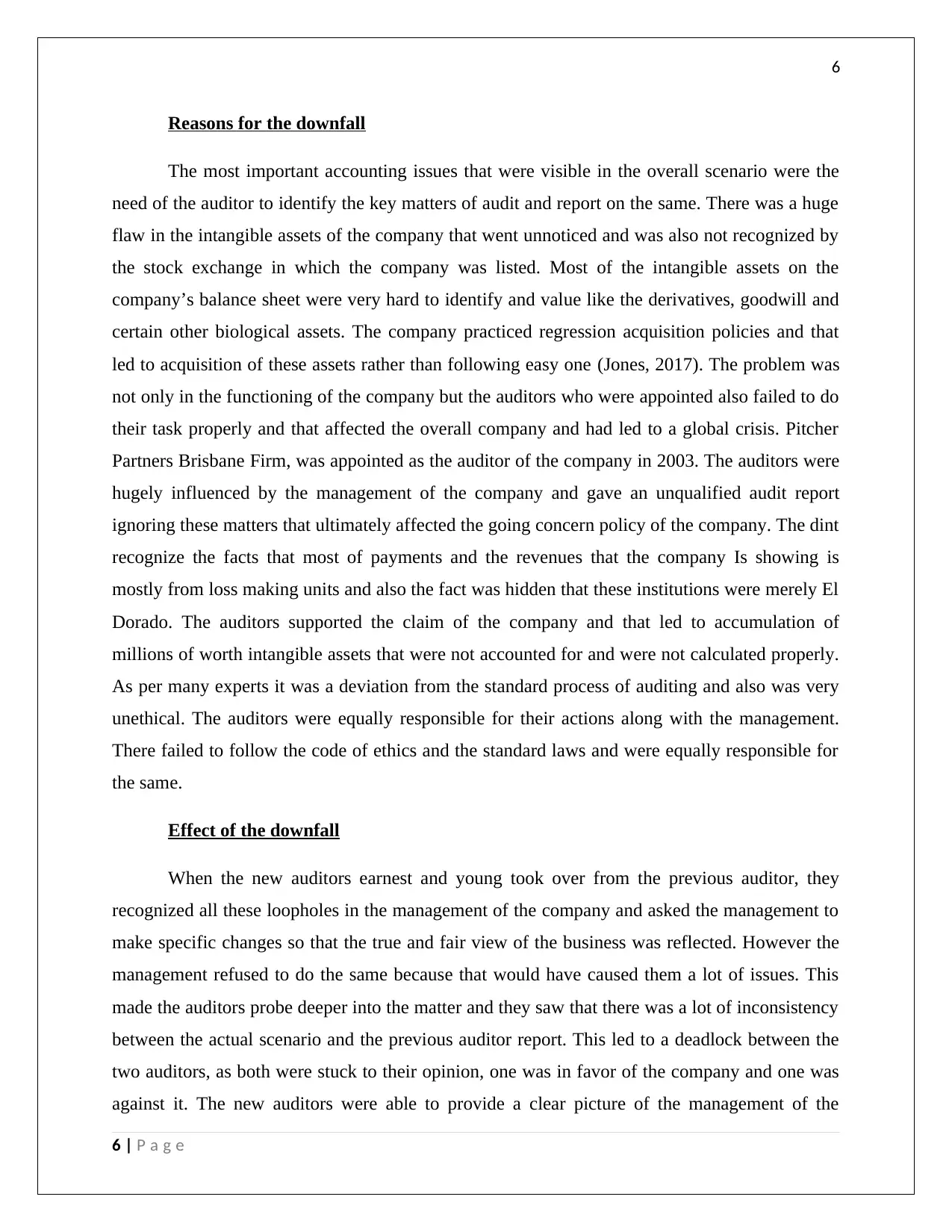
6
Reasons for the downfall
The most important accounting issues that were visible in the overall scenario were the
need of the auditor to identify the key matters of audit and report on the same. There was a huge
flaw in the intangible assets of the company that went unnoticed and was also not recognized by
the stock exchange in which the company was listed. Most of the intangible assets on the
company’s balance sheet were very hard to identify and value like the derivatives, goodwill and
certain other biological assets. The company practiced regression acquisition policies and that
led to acquisition of these assets rather than following easy one (Jones, 2017). The problem was
not only in the functioning of the company but the auditors who were appointed also failed to do
their task properly and that affected the overall company and had led to a global crisis. Pitcher
Partners Brisbane Firm, was appointed as the auditor of the company in 2003. The auditors were
hugely influenced by the management of the company and gave an unqualified audit report
ignoring these matters that ultimately affected the going concern policy of the company. The dint
recognize the facts that most of payments and the revenues that the company Is showing is
mostly from loss making units and also the fact was hidden that these institutions were merely El
Dorado. The auditors supported the claim of the company and that led to accumulation of
millions of worth intangible assets that were not accounted for and were not calculated properly.
As per many experts it was a deviation from the standard process of auditing and also was very
unethical. The auditors were equally responsible for their actions along with the management.
There failed to follow the code of ethics and the standard laws and were equally responsible for
the same.
Effect of the downfall
When the new auditors earnest and young took over from the previous auditor, they
recognized all these loopholes in the management of the company and asked the management to
make specific changes so that the true and fair view of the business was reflected. However the
management refused to do the same because that would have caused them a lot of issues. This
made the auditors probe deeper into the matter and they saw that there was a lot of inconsistency
between the actual scenario and the previous auditor report. This led to a deadlock between the
two auditors, as both were stuck to their opinion, one was in favor of the company and one was
against it. The new auditors were able to provide a clear picture of the management of the
6 | P a g e
Reasons for the downfall
The most important accounting issues that were visible in the overall scenario were the
need of the auditor to identify the key matters of audit and report on the same. There was a huge
flaw in the intangible assets of the company that went unnoticed and was also not recognized by
the stock exchange in which the company was listed. Most of the intangible assets on the
company’s balance sheet were very hard to identify and value like the derivatives, goodwill and
certain other biological assets. The company practiced regression acquisition policies and that
led to acquisition of these assets rather than following easy one (Jones, 2017). The problem was
not only in the functioning of the company but the auditors who were appointed also failed to do
their task properly and that affected the overall company and had led to a global crisis. Pitcher
Partners Brisbane Firm, was appointed as the auditor of the company in 2003. The auditors were
hugely influenced by the management of the company and gave an unqualified audit report
ignoring these matters that ultimately affected the going concern policy of the company. The dint
recognize the facts that most of payments and the revenues that the company Is showing is
mostly from loss making units and also the fact was hidden that these institutions were merely El
Dorado. The auditors supported the claim of the company and that led to accumulation of
millions of worth intangible assets that were not accounted for and were not calculated properly.
As per many experts it was a deviation from the standard process of auditing and also was very
unethical. The auditors were equally responsible for their actions along with the management.
There failed to follow the code of ethics and the standard laws and were equally responsible for
the same.
Effect of the downfall
When the new auditors earnest and young took over from the previous auditor, they
recognized all these loopholes in the management of the company and asked the management to
make specific changes so that the true and fair view of the business was reflected. However the
management refused to do the same because that would have caused them a lot of issues. This
made the auditors probe deeper into the matter and they saw that there was a lot of inconsistency
between the actual scenario and the previous auditor report. This led to a deadlock between the
two auditors, as both were stuck to their opinion, one was in favor of the company and one was
against it. The new auditors were able to provide a clear picture of the management of the
6 | P a g e
Paraphrase This Document
Need a fresh take? Get an instant paraphrase of this document with our AI Paraphraser
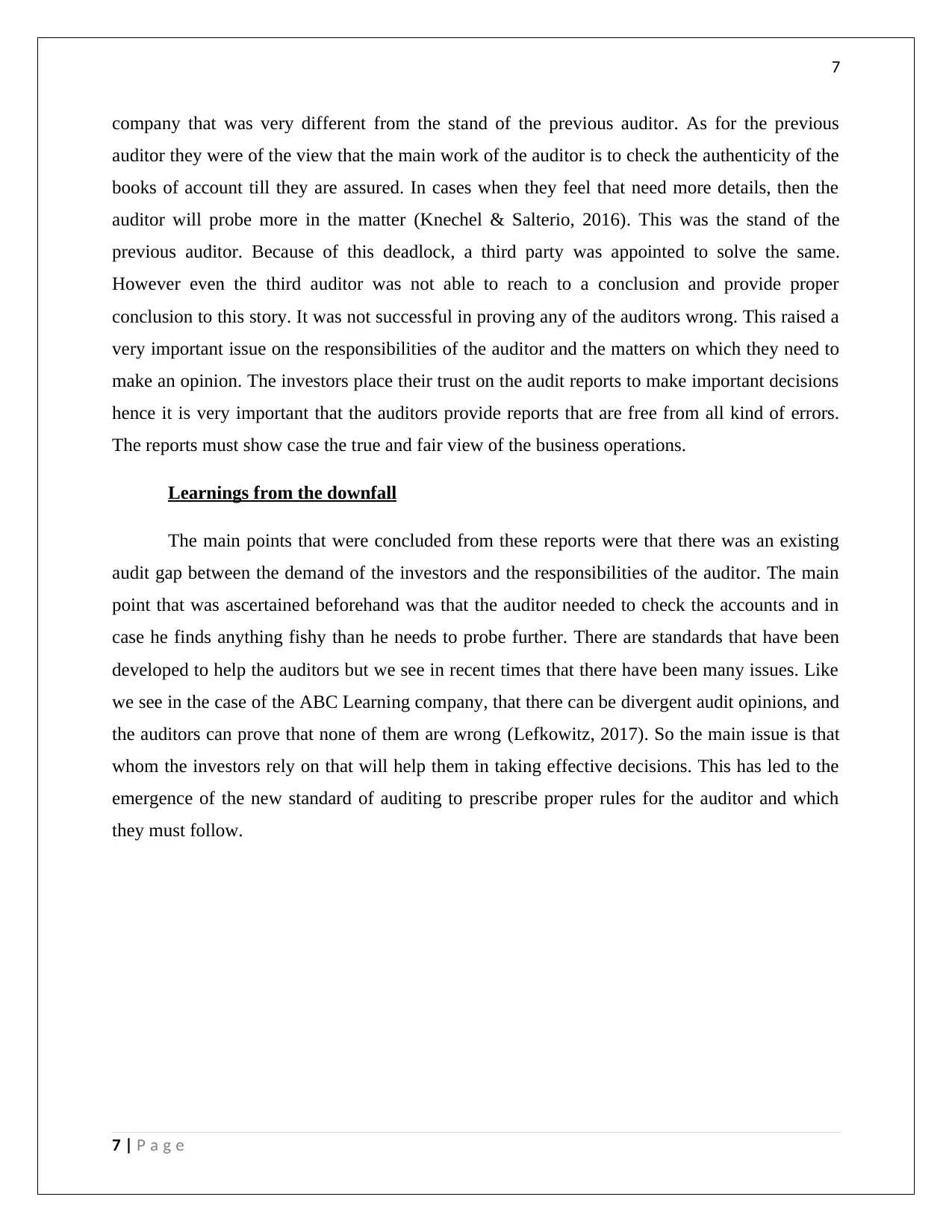
7
company that was very different from the stand of the previous auditor. As for the previous
auditor they were of the view that the main work of the auditor is to check the authenticity of the
books of account till they are assured. In cases when they feel that need more details, then the
auditor will probe more in the matter (Knechel & Salterio, 2016). This was the stand of the
previous auditor. Because of this deadlock, a third party was appointed to solve the same.
However even the third auditor was not able to reach to a conclusion and provide proper
conclusion to this story. It was not successful in proving any of the auditors wrong. This raised a
very important issue on the responsibilities of the auditor and the matters on which they need to
make an opinion. The investors place their trust on the audit reports to make important decisions
hence it is very important that the auditors provide reports that are free from all kind of errors.
The reports must show case the true and fair view of the business operations.
Learnings from the downfall
The main points that were concluded from these reports were that there was an existing
audit gap between the demand of the investors and the responsibilities of the auditor. The main
point that was ascertained beforehand was that the auditor needed to check the accounts and in
case he finds anything fishy than he needs to probe further. There are standards that have been
developed to help the auditors but we see in recent times that there have been many issues. Like
we see in the case of the ABC Learning company, that there can be divergent audit opinions, and
the auditors can prove that none of them are wrong (Lefkowitz, 2017). So the main issue is that
whom the investors rely on that will help them in taking effective decisions. This has led to the
emergence of the new standard of auditing to prescribe proper rules for the auditor and which
they must follow.
7 | P a g e
company that was very different from the stand of the previous auditor. As for the previous
auditor they were of the view that the main work of the auditor is to check the authenticity of the
books of account till they are assured. In cases when they feel that need more details, then the
auditor will probe more in the matter (Knechel & Salterio, 2016). This was the stand of the
previous auditor. Because of this deadlock, a third party was appointed to solve the same.
However even the third auditor was not able to reach to a conclusion and provide proper
conclusion to this story. It was not successful in proving any of the auditors wrong. This raised a
very important issue on the responsibilities of the auditor and the matters on which they need to
make an opinion. The investors place their trust on the audit reports to make important decisions
hence it is very important that the auditors provide reports that are free from all kind of errors.
The reports must show case the true and fair view of the business operations.
Learnings from the downfall
The main points that were concluded from these reports were that there was an existing
audit gap between the demand of the investors and the responsibilities of the auditor. The main
point that was ascertained beforehand was that the auditor needed to check the accounts and in
case he finds anything fishy than he needs to probe further. There are standards that have been
developed to help the auditors but we see in recent times that there have been many issues. Like
we see in the case of the ABC Learning company, that there can be divergent audit opinions, and
the auditors can prove that none of them are wrong (Lefkowitz, 2017). So the main issue is that
whom the investors rely on that will help them in taking effective decisions. This has led to the
emergence of the new standard of auditing to prescribe proper rules for the auditor and which
they must follow.
7 | P a g e
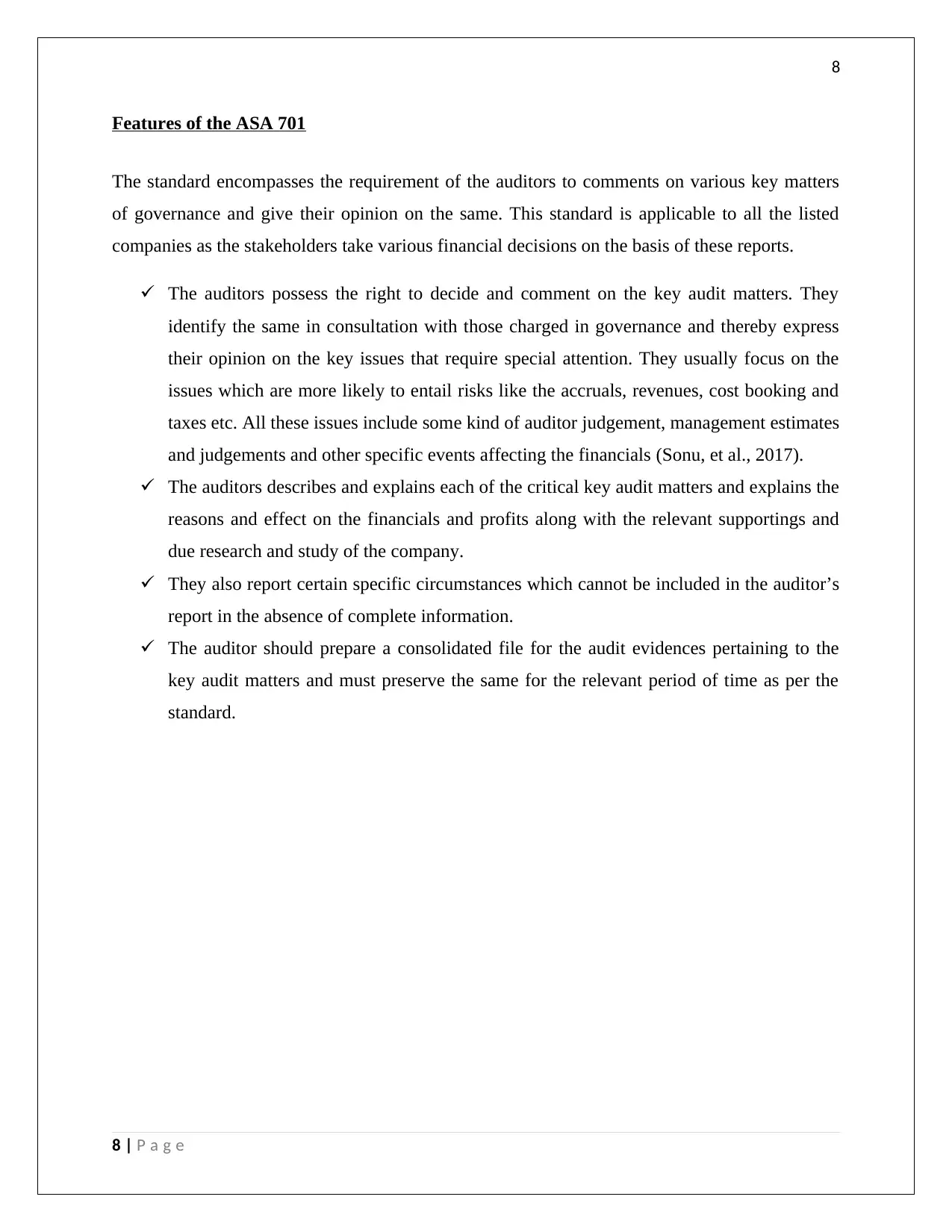
8
Features of the ASA 701
The standard encompasses the requirement of the auditors to comments on various key matters
of governance and give their opinion on the same. This standard is applicable to all the listed
companies as the stakeholders take various financial decisions on the basis of these reports.
The auditors possess the right to decide and comment on the key audit matters. They
identify the same in consultation with those charged in governance and thereby express
their opinion on the key issues that require special attention. They usually focus on the
issues which are more likely to entail risks like the accruals, revenues, cost booking and
taxes etc. All these issues include some kind of auditor judgement, management estimates
and judgements and other specific events affecting the financials (Sonu, et al., 2017).
The auditors describes and explains each of the critical key audit matters and explains the
reasons and effect on the financials and profits along with the relevant supportings and
due research and study of the company.
They also report certain specific circumstances which cannot be included in the auditor’s
report in the absence of complete information.
The auditor should prepare a consolidated file for the audit evidences pertaining to the
key audit matters and must preserve the same for the relevant period of time as per the
standard.
8 | P a g e
Features of the ASA 701
The standard encompasses the requirement of the auditors to comments on various key matters
of governance and give their opinion on the same. This standard is applicable to all the listed
companies as the stakeholders take various financial decisions on the basis of these reports.
The auditors possess the right to decide and comment on the key audit matters. They
identify the same in consultation with those charged in governance and thereby express
their opinion on the key issues that require special attention. They usually focus on the
issues which are more likely to entail risks like the accruals, revenues, cost booking and
taxes etc. All these issues include some kind of auditor judgement, management estimates
and judgements and other specific events affecting the financials (Sonu, et al., 2017).
The auditors describes and explains each of the critical key audit matters and explains the
reasons and effect on the financials and profits along with the relevant supportings and
due research and study of the company.
They also report certain specific circumstances which cannot be included in the auditor’s
report in the absence of complete information.
The auditor should prepare a consolidated file for the audit evidences pertaining to the
key audit matters and must preserve the same for the relevant period of time as per the
standard.
8 | P a g e
⊘ This is a preview!⊘
Do you want full access?
Subscribe today to unlock all pages.

Trusted by 1+ million students worldwide
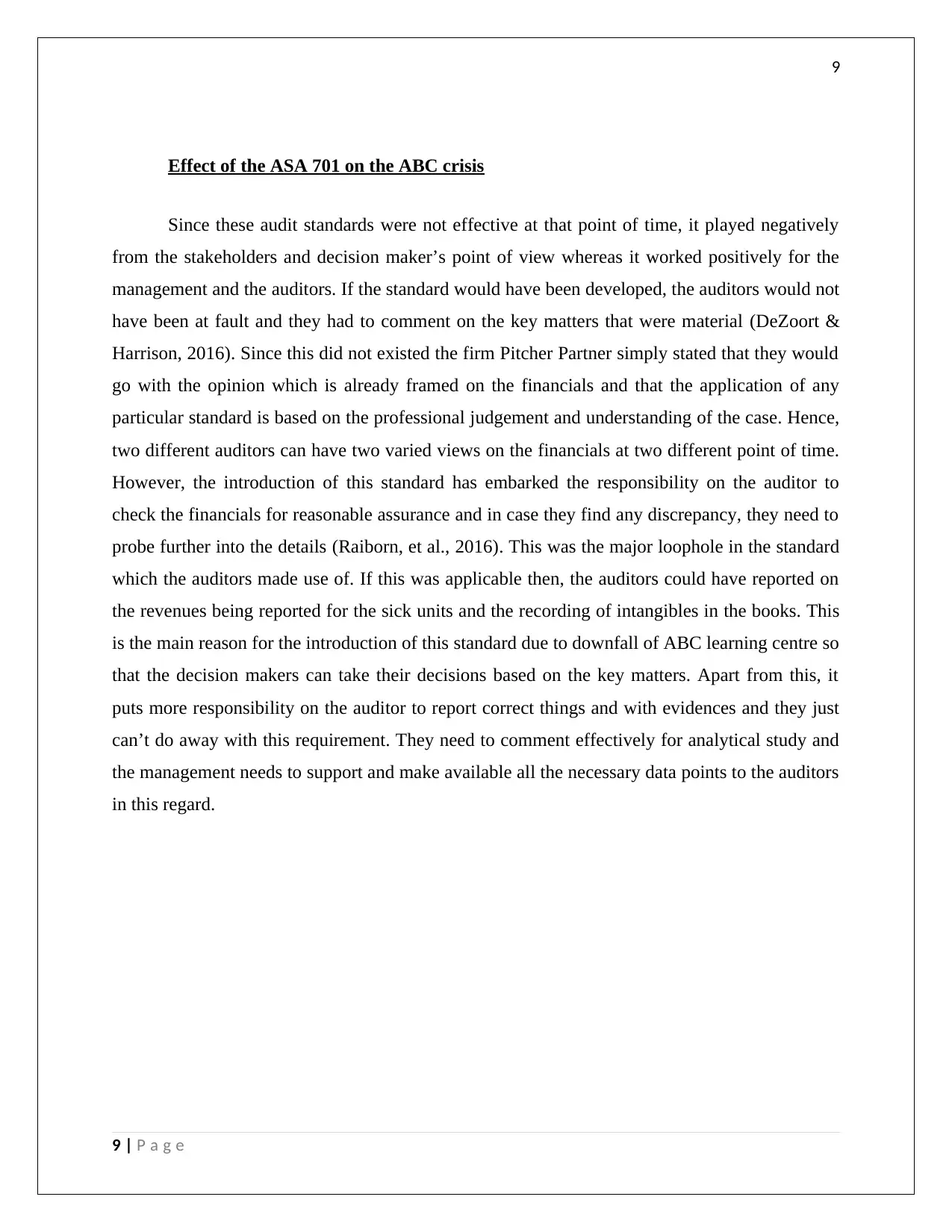
9
Effect of the ASA 701 on the ABC crisis
Since these audit standards were not effective at that point of time, it played negatively
from the stakeholders and decision maker’s point of view whereas it worked positively for the
management and the auditors. If the standard would have been developed, the auditors would not
have been at fault and they had to comment on the key matters that were material (DeZoort &
Harrison, 2016). Since this did not existed the firm Pitcher Partner simply stated that they would
go with the opinion which is already framed on the financials and that the application of any
particular standard is based on the professional judgement and understanding of the case. Hence,
two different auditors can have two varied views on the financials at two different point of time.
However, the introduction of this standard has embarked the responsibility on the auditor to
check the financials for reasonable assurance and in case they find any discrepancy, they need to
probe further into the details (Raiborn, et al., 2016). This was the major loophole in the standard
which the auditors made use of. If this was applicable then, the auditors could have reported on
the revenues being reported for the sick units and the recording of intangibles in the books. This
is the main reason for the introduction of this standard due to downfall of ABC learning centre so
that the decision makers can take their decisions based on the key matters. Apart from this, it
puts more responsibility on the auditor to report correct things and with evidences and they just
can’t do away with this requirement. They need to comment effectively for analytical study and
the management needs to support and make available all the necessary data points to the auditors
in this regard.
9 | P a g e
Effect of the ASA 701 on the ABC crisis
Since these audit standards were not effective at that point of time, it played negatively
from the stakeholders and decision maker’s point of view whereas it worked positively for the
management and the auditors. If the standard would have been developed, the auditors would not
have been at fault and they had to comment on the key matters that were material (DeZoort &
Harrison, 2016). Since this did not existed the firm Pitcher Partner simply stated that they would
go with the opinion which is already framed on the financials and that the application of any
particular standard is based on the professional judgement and understanding of the case. Hence,
two different auditors can have two varied views on the financials at two different point of time.
However, the introduction of this standard has embarked the responsibility on the auditor to
check the financials for reasonable assurance and in case they find any discrepancy, they need to
probe further into the details (Raiborn, et al., 2016). This was the major loophole in the standard
which the auditors made use of. If this was applicable then, the auditors could have reported on
the revenues being reported for the sick units and the recording of intangibles in the books. This
is the main reason for the introduction of this standard due to downfall of ABC learning centre so
that the decision makers can take their decisions based on the key matters. Apart from this, it
puts more responsibility on the auditor to report correct things and with evidences and they just
can’t do away with this requirement. They need to comment effectively for analytical study and
the management needs to support and make available all the necessary data points to the auditors
in this regard.
9 | P a g e
Paraphrase This Document
Need a fresh take? Get an instant paraphrase of this document with our AI Paraphraser
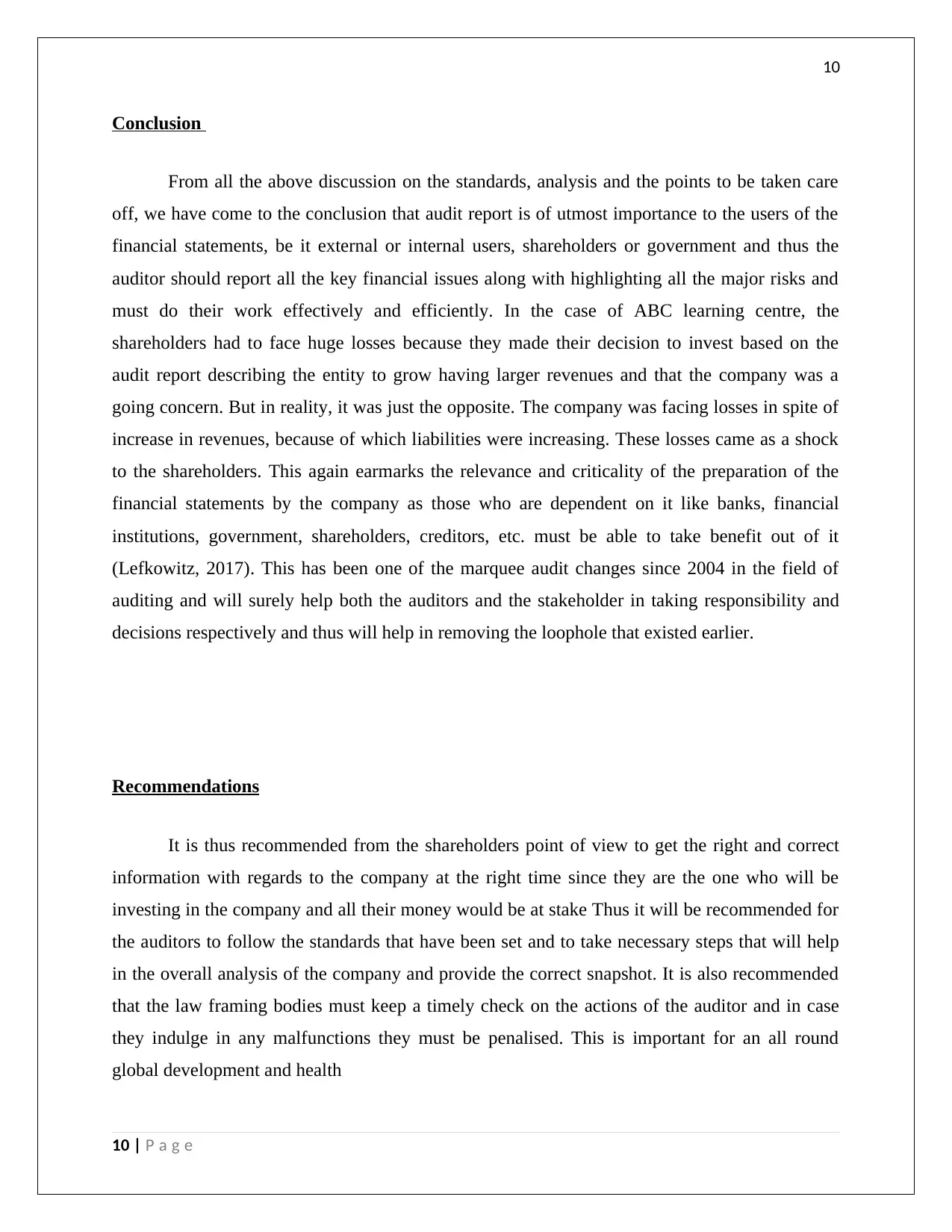
10
Conclusion
From all the above discussion on the standards, analysis and the points to be taken care
off, we have come to the conclusion that audit report is of utmost importance to the users of the
financial statements, be it external or internal users, shareholders or government and thus the
auditor should report all the key financial issues along with highlighting all the major risks and
must do their work effectively and efficiently. In the case of ABC learning centre, the
shareholders had to face huge losses because they made their decision to invest based on the
audit report describing the entity to grow having larger revenues and that the company was a
going concern. But in reality, it was just the opposite. The company was facing losses in spite of
increase in revenues, because of which liabilities were increasing. These losses came as a shock
to the shareholders. This again earmarks the relevance and criticality of the preparation of the
financial statements by the company as those who are dependent on it like banks, financial
institutions, government, shareholders, creditors, etc. must be able to take benefit out of it
(Lefkowitz, 2017). This has been one of the marquee audit changes since 2004 in the field of
auditing and will surely help both the auditors and the stakeholder in taking responsibility and
decisions respectively and thus will help in removing the loophole that existed earlier.
Recommendations
It is thus recommended from the shareholders point of view to get the right and correct
information with regards to the company at the right time since they are the one who will be
investing in the company and all their money would be at stake Thus it will be recommended for
the auditors to follow the standards that have been set and to take necessary steps that will help
in the overall analysis of the company and provide the correct snapshot. It is also recommended
that the law framing bodies must keep a timely check on the actions of the auditor and in case
they indulge in any malfunctions they must be penalised. This is important for an all round
global development and health
10 | P a g e
Conclusion
From all the above discussion on the standards, analysis and the points to be taken care
off, we have come to the conclusion that audit report is of utmost importance to the users of the
financial statements, be it external or internal users, shareholders or government and thus the
auditor should report all the key financial issues along with highlighting all the major risks and
must do their work effectively and efficiently. In the case of ABC learning centre, the
shareholders had to face huge losses because they made their decision to invest based on the
audit report describing the entity to grow having larger revenues and that the company was a
going concern. But in reality, it was just the opposite. The company was facing losses in spite of
increase in revenues, because of which liabilities were increasing. These losses came as a shock
to the shareholders. This again earmarks the relevance and criticality of the preparation of the
financial statements by the company as those who are dependent on it like banks, financial
institutions, government, shareholders, creditors, etc. must be able to take benefit out of it
(Lefkowitz, 2017). This has been one of the marquee audit changes since 2004 in the field of
auditing and will surely help both the auditors and the stakeholder in taking responsibility and
decisions respectively and thus will help in removing the loophole that existed earlier.
Recommendations
It is thus recommended from the shareholders point of view to get the right and correct
information with regards to the company at the right time since they are the one who will be
investing in the company and all their money would be at stake Thus it will be recommended for
the auditors to follow the standards that have been set and to take necessary steps that will help
in the overall analysis of the company and provide the correct snapshot. It is also recommended
that the law framing bodies must keep a timely check on the actions of the auditor and in case
they indulge in any malfunctions they must be penalised. This is important for an all round
global development and health
10 | P a g e
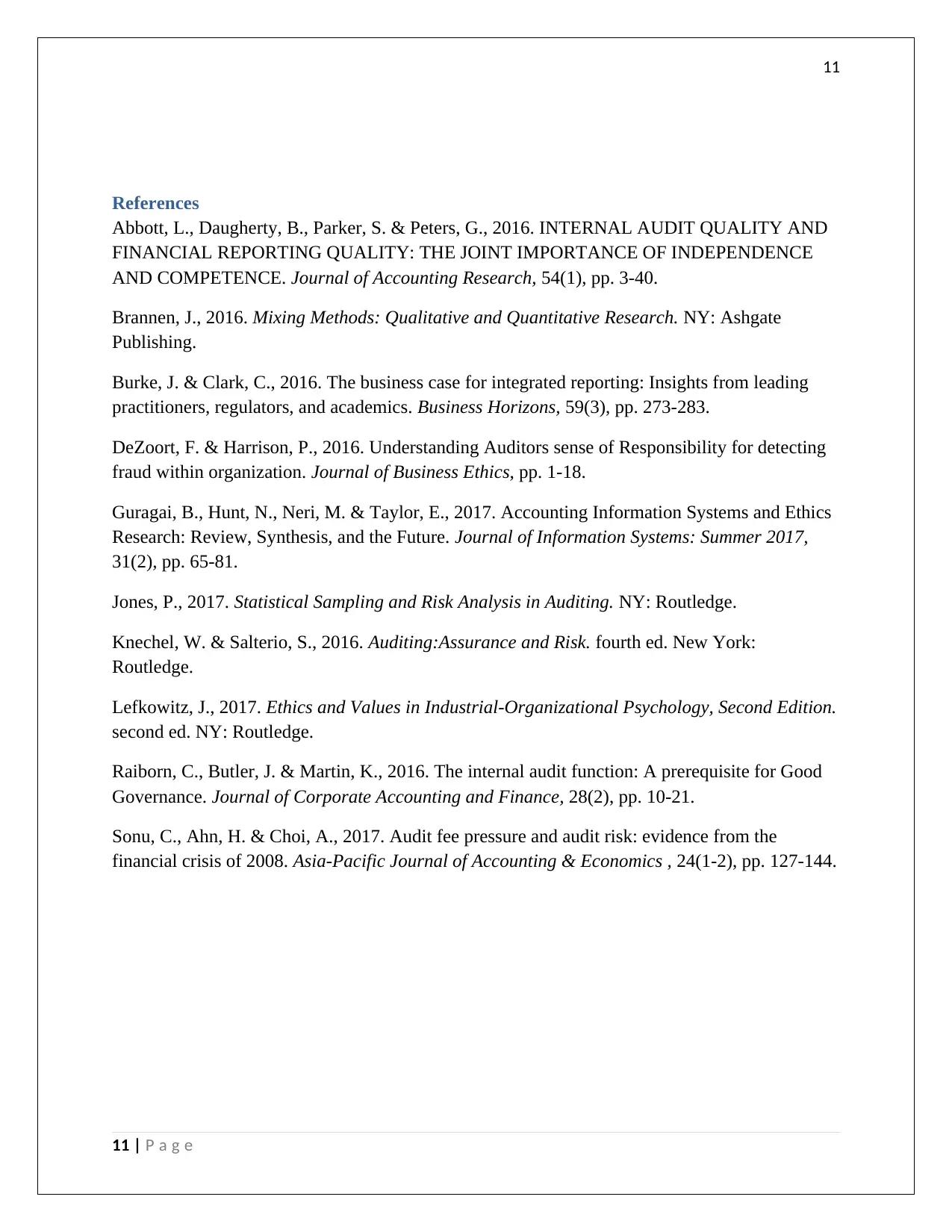
11
References
Abbott, L., Daugherty, B., Parker, S. & Peters, G., 2016. INTERNAL AUDIT QUALITY AND
FINANCIAL REPORTING QUALITY: THE JOINT IMPORTANCE OF INDEPENDENCE
AND COMPETENCE. Journal of Accounting Research, 54(1), pp. 3-40.
Brannen, J., 2016. Mixing Methods: Qualitative and Quantitative Research. NY: Ashgate
Publishing.
Burke, J. & Clark, C., 2016. The business case for integrated reporting: Insights from leading
practitioners, regulators, and academics. Business Horizons, 59(3), pp. 273-283.
DeZoort, F. & Harrison, P., 2016. Understanding Auditors sense of Responsibility for detecting
fraud within organization. Journal of Business Ethics, pp. 1-18.
Guragai, B., Hunt, N., Neri, M. & Taylor, E., 2017. Accounting Information Systems and Ethics
Research: Review, Synthesis, and the Future. Journal of Information Systems: Summer 2017,
31(2), pp. 65-81.
Jones, P., 2017. Statistical Sampling and Risk Analysis in Auditing. NY: Routledge.
Knechel, W. & Salterio, S., 2016. Auditing:Assurance and Risk. fourth ed. New York:
Routledge.
Lefkowitz, J., 2017. Ethics and Values in Industrial-Organizational Psychology, Second Edition.
second ed. NY: Routledge.
Raiborn, C., Butler, J. & Martin, K., 2016. The internal audit function: A prerequisite for Good
Governance. Journal of Corporate Accounting and Finance, 28(2), pp. 10-21.
Sonu, C., Ahn, H. & Choi, A., 2017. Audit fee pressure and audit risk: evidence from the
financial crisis of 2008. Asia-Pacific Journal of Accounting & Economics , 24(1-2), pp. 127-144.
11 | P a g e
References
Abbott, L., Daugherty, B., Parker, S. & Peters, G., 2016. INTERNAL AUDIT QUALITY AND
FINANCIAL REPORTING QUALITY: THE JOINT IMPORTANCE OF INDEPENDENCE
AND COMPETENCE. Journal of Accounting Research, 54(1), pp. 3-40.
Brannen, J., 2016. Mixing Methods: Qualitative and Quantitative Research. NY: Ashgate
Publishing.
Burke, J. & Clark, C., 2016. The business case for integrated reporting: Insights from leading
practitioners, regulators, and academics. Business Horizons, 59(3), pp. 273-283.
DeZoort, F. & Harrison, P., 2016. Understanding Auditors sense of Responsibility for detecting
fraud within organization. Journal of Business Ethics, pp. 1-18.
Guragai, B., Hunt, N., Neri, M. & Taylor, E., 2017. Accounting Information Systems and Ethics
Research: Review, Synthesis, and the Future. Journal of Information Systems: Summer 2017,
31(2), pp. 65-81.
Jones, P., 2017. Statistical Sampling and Risk Analysis in Auditing. NY: Routledge.
Knechel, W. & Salterio, S., 2016. Auditing:Assurance and Risk. fourth ed. New York:
Routledge.
Lefkowitz, J., 2017. Ethics and Values in Industrial-Organizational Psychology, Second Edition.
second ed. NY: Routledge.
Raiborn, C., Butler, J. & Martin, K., 2016. The internal audit function: A prerequisite for Good
Governance. Journal of Corporate Accounting and Finance, 28(2), pp. 10-21.
Sonu, C., Ahn, H. & Choi, A., 2017. Audit fee pressure and audit risk: evidence from the
financial crisis of 2008. Asia-Pacific Journal of Accounting & Economics , 24(1-2), pp. 127-144.
11 | P a g e
⊘ This is a preview!⊘
Do you want full access?
Subscribe today to unlock all pages.

Trusted by 1+ million students worldwide
1 out of 13
Related Documents
Your All-in-One AI-Powered Toolkit for Academic Success.
+13062052269
info@desklib.com
Available 24*7 on WhatsApp / Email
![[object Object]](/_next/static/media/star-bottom.7253800d.svg)
Unlock your academic potential
Copyright © 2020–2025 A2Z Services. All Rights Reserved. Developed and managed by ZUCOL.





